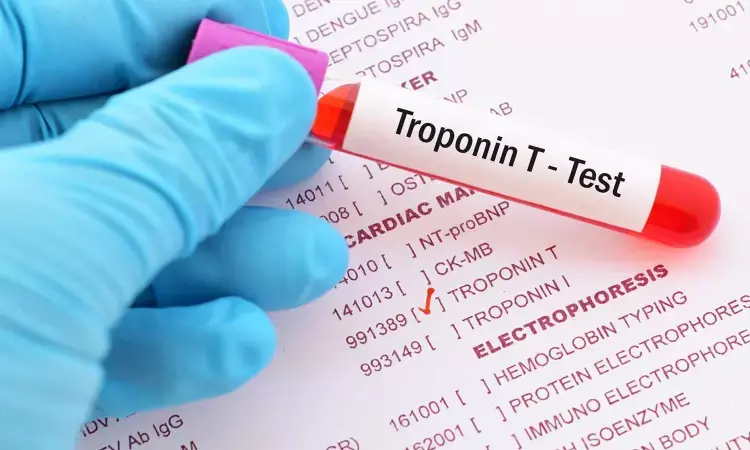- Home
- Medical news & Guidelines
- Anesthesiology
- Cardiology and CTVS
- Critical Care
- Dentistry
- Dermatology
- Diabetes and Endocrinology
- ENT
- Gastroenterology
- Medicine
- Nephrology
- Neurology
- Obstretics-Gynaecology
- Oncology
- Ophthalmology
- Orthopaedics
- Pediatrics-Neonatology
- Psychiatry
- Pulmonology
- Radiology
- Surgery
- Urology
- Laboratory Medicine
- Diet
- Nursing
- Paramedical
- Physiotherapy
- Health news
- Fact Check
- Bone Health Fact Check
- Brain Health Fact Check
- Cancer Related Fact Check
- Child Care Fact Check
- Dental and oral health fact check
- Diabetes and metabolic health fact check
- Diet and Nutrition Fact Check
- Eye and ENT Care Fact Check
- Fitness fact check
- Gut health fact check
- Heart health fact check
- Kidney health fact check
- Medical education fact check
- Men's health fact check
- Respiratory fact check
- Skin and hair care fact check
- Vaccine and Immunization fact check
- Women's health fact check
- AYUSH
- State News
- Andaman and Nicobar Islands
- Andhra Pradesh
- Arunachal Pradesh
- Assam
- Bihar
- Chandigarh
- Chattisgarh
- Dadra and Nagar Haveli
- Daman and Diu
- Delhi
- Goa
- Gujarat
- Haryana
- Himachal Pradesh
- Jammu & Kashmir
- Jharkhand
- Karnataka
- Kerala
- Ladakh
- Lakshadweep
- Madhya Pradesh
- Maharashtra
- Manipur
- Meghalaya
- Mizoram
- Nagaland
- Odisha
- Puducherry
- Punjab
- Rajasthan
- Sikkim
- Tamil Nadu
- Telangana
- Tripura
- Uttar Pradesh
- Uttrakhand
- West Bengal
- Medical Education
- Industry
Single high-sensitivity cardiac troponin T reading can safely exclude MI in ED

USA: A single high-sensitivity cardiac troponin T (hs-cTnT) below the cutoff of 6 ng/L is a rapid and safe strategy for identifying a substantial number of patients at very low risk for acute myocardial injury and infarction, claims a recent study in Circulation.
The use of a single hs-cTnT below the limit of detection (LoD) of 5 ng/L to exclude acute myocardial infarction has a backing of good data. As per the United States Food and Drug Administration (US FDA), hs-cTnT can only report to the limit of quantitation (LoQ) of 6 ng/L -- a threshold for which the data is limited.
Yader Sandoval, Department of Cardiovascular Diseases, Mayo Clinic, Rochester, MN, and colleagues conducted the study with the goal to determine whether a single hs-cTnT below the LoQ of 6 ng/L is a safe strategy to identify patients at low risk for acute myocardial injury and infarction.
For this purpose, the researchers examined the efficacy (proportion identified as low-risk based on baseline hs-cTnT<6 ng/L) of identifying low-risk patients in a multicenter (n=22 sites) US cohort study of emergency department patients undergoing at least one hs-cTnT (CV Data Mart Biomarker cohort). They then determined the performance of a single hs-cTnT<6 ng/L (biomarker alone) to exclude acute myocardial injury (subsequent hs-cTnT >99th percentile in those with an initial hs-cTnT<6 ng/L).
Subsequently, they tested the clinically intended rule-out strategy combining a nonischemic electrocardiogram with a baseline hs-cTnT<6 ng/L in an adjudicated cohort in which the diagnostic performance for ruling-out acute myocardial infarction and safety (myocardial infarction or death at 30-days) were evaluated.
The study led to the following findings:
· A total of 85,610 patients were evaluated in the CV Data Mart Biomarker cohort, amongst which 24,646 (29%) had a baseline hs-cTnT<6 ng/L.
· Women were more likely than men to have hs-cTnT<6 ng/L (38% vs. 20%).
· Among 11,962 patients with baseline hs-cTnT<6 ng/L and serial measurements, only 1.2% developed acute myocardial injury, resulting in a negative predictive value of 98.8% and sensitivity of 99.6%.
· In the adjudicated cohort, a nonischemic electrocardiogram with hs-cTnT<6 ng/L identified 33% of patients (610 of 1849) as low-risk and resulted in a negative predictive value and sensitivity of 100% and a 30-day rate of 0.2% for 30-day myocardial infarction or death.
"Our data imply that a single hs-cTnT below the limit of quantitation (LoQ) of 6 ng/L is a safe and rapid method to identify a substantial number of patients at very low risk for acute myocardial injury and infarction," the authors conclude.
Reference:
Sandoval Y, Lewis BR, Mehta RA, Ola O, Knott JD, De Michieli L, Akula A, Lobo R, Yang EH, Gharacholou SM, Dworak M, Crockford E, Rastas N, Grube E, Karturi S, Wohlrab S, Hodge DO, Tak T, Cagin C, Gulati R, Jaffe AS. Rapid Exclusion of Acute Myocardial Injury and Infarction with a Single High Sensitivity Cardiac Troponin T in the Emergency Department: a Multicenter United States Evaluation. Circulation. 2022 May 10. doi: 10.1161/CIRCULATIONAHA.122.059235. Epub ahead of print. PMID: 35535607.
Dr Kamal Kant Kohli-MBBS, DTCD- a chest specialist with more than 30 years of practice and a flair for writing clinical articles, Dr Kamal Kant Kohli joined Medical Dialogues as a Chief Editor of Medical News. Besides writing articles, as an editor, he proofreads and verifies all the medical content published on Medical Dialogues including those coming from journals, studies,medical conferences,guidelines etc. Email: drkohli@medicaldialogues.in. Contact no. 011-43720751


